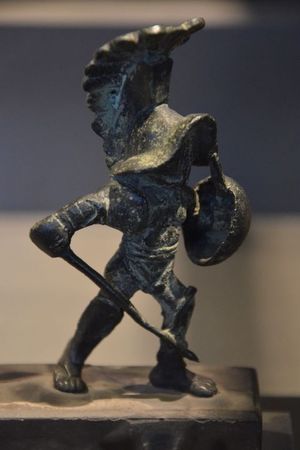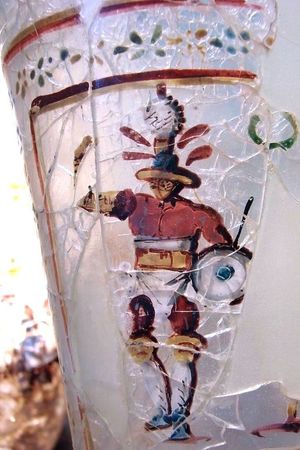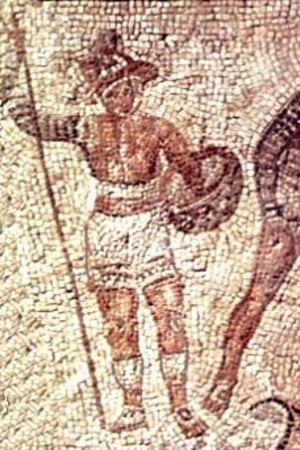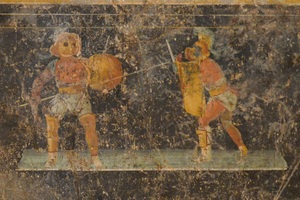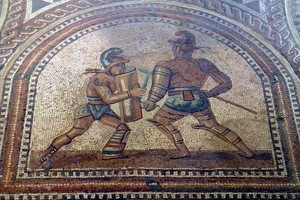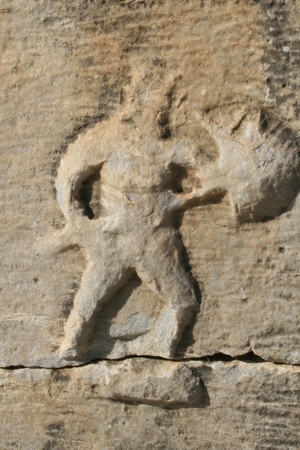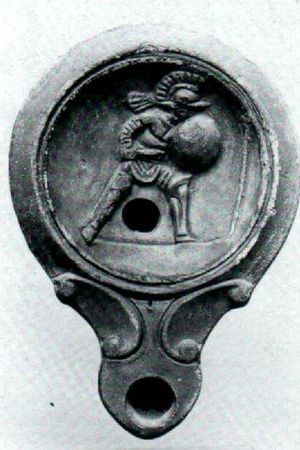Hoplomachus
Hoplomachus (Latin: hoplomachus) was an ancient roman gladiator armed with a spear and a shield. Their equipment imitated the appearance of Greek hoplites, portraying their image in the arena. The word "hoplomachus" itself is derived from the Greek ὁπλομάχος, which translates to "armed fighter" or "fighter with a hoplon" in Russian. The equipment of a hoplomachus resembled that of a murmillo, with the exception of the primary weapon and shield. It consisted of a helmet, a hybrid of a parma and hoplon made from a single sheet of thick bronze (examples have been found in Pompeii), tall greaves, manicae (arm guards), and a belt. The hoplomachus helmet had wide brims and completely covered the face, protecting the eyes with a metal mesh. It was adorned with a crest where feathers could be inserted, and they could also be inserted on the sides. The hoplomachus wielded a gladius as their primary weapon and a pugio as their auxiliary weapon. They mostly fought against murmillos and other gladiators armed with swords.
Equipment
The equipment of a hoplomachus included:
During the reconstruction of a combat scenario not on a sandy arena, it is recommended to use authentic footwear, such as caligae.
It is believed that hoplomachus shields were made of bronze. This is indicated by various depictions where shields are shown as convex, almost semi-spherical, as well as archaeological findings of bronze shields. An example is a shield from Pompeii with a diameter of 37 cm and weighing 1.8 kg.
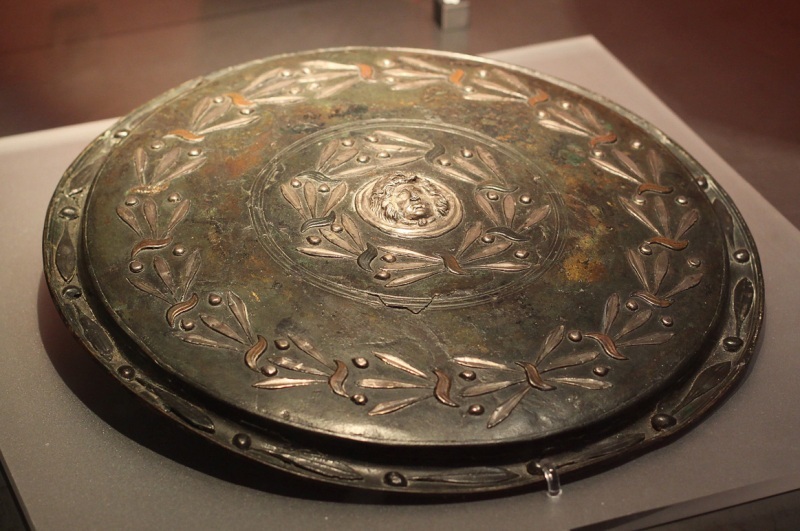 Shield of Hoplomachus of Pompeii. Bronze. 1st century AD
Shield of Hoplomachus of Pompeii. Bronze. 1st century AD
Related topics
Gladiator, Helmet, Manica, Ocrea, Balteus, Subligaculum, Gasta, Pugio, Shield, Murmillo

 Gallery
Gallery






